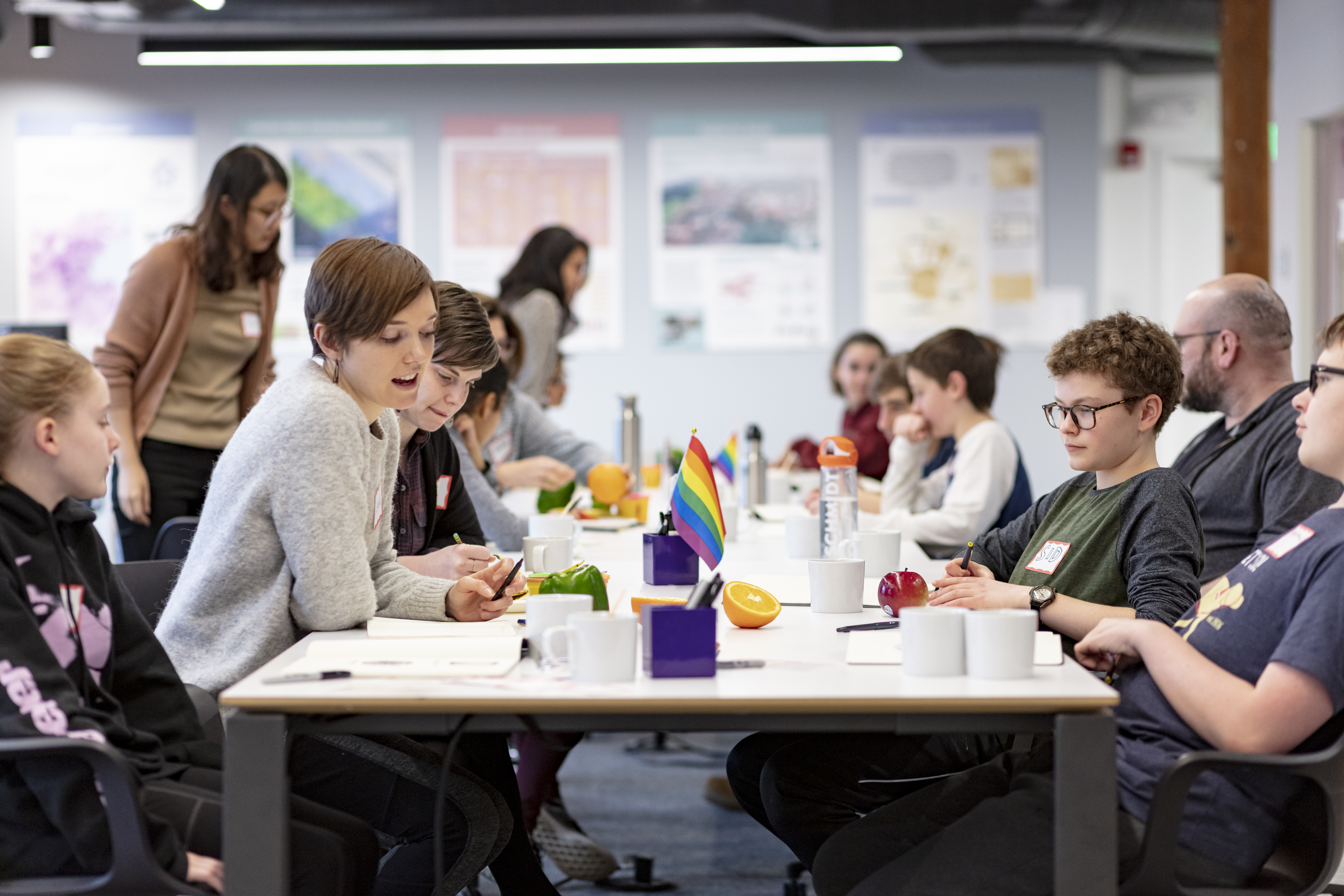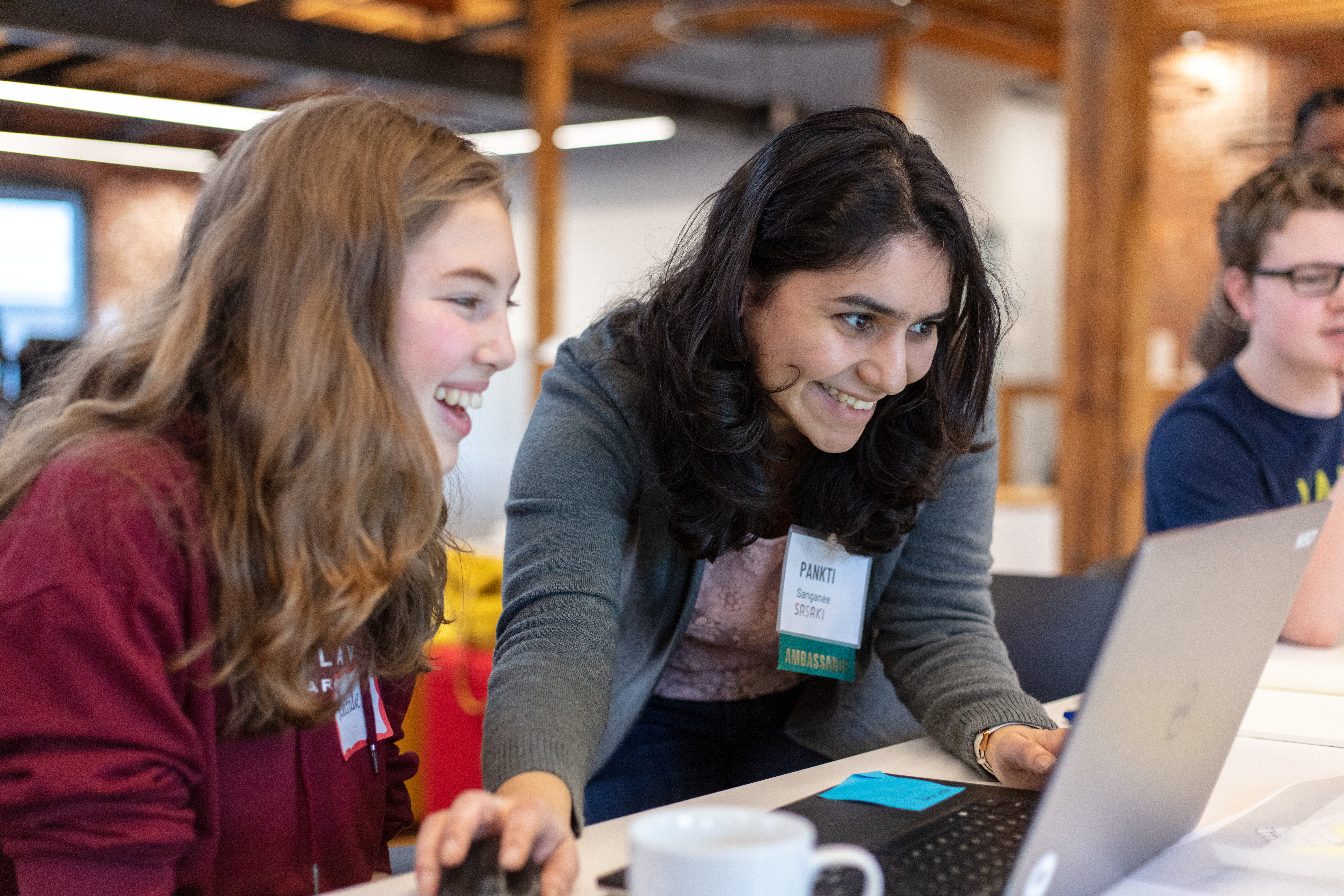June 10, 2020
Over the last eight months, we have been conducting our inaugural Design Mentorship Program in partnership with American Student Assistance (ASA). Students from Watertown Middle School have been meeting with mentors from Sasaki (both in person and, as of late due to the pandemic, virtually), who have been opening students’ eyes and minds to the world of design through hands-on activities, virtual reality, software programs, and more. Middle school students have been envisioning and designing what their ideal learning environment would look like through their own creativity and through a design lens.
We are thrilled to be able to partner with ASA on this inaugural program. For over 60 years, education has been at ASA’s core and they’re focused on helping students find their path and plan for their future. Their mission is to help students know themselves, know their options, and make informed decisions to achieve their education and career goals. With their partnership, we are grateful to build upon our design education initiatives, expand the talent pipeline, and advance inclusivity in the next generation of design professionals.

It has been wonderful having students from Watertown Middle School participate in this program, as Watertown has been home to the Sasaki Foundation since our organization’s inception in 2000, and has been home to Sasaki for over sixty years.
Led by architectural designer Emily Parris, Sasaki mentors Madelyn Albright, Lorena Brambila, Sarah Bush, Julia Carlton MacKay, Jill Dixon, Eileen Gainfort, John Gilbert, Marlene Mendez, Nuith Morales, David Morgan, Gretchen Neeley, Breeze Outlaw, Ashley Pelletier, Daniel Pryor, Pankti Sanganee, Kira Sargent, Kartiki Sharma, Kara Slocum, Elaine Stokes, Robert Sugar, Carlos Torres, Lanmuzhi Yang, and Ben Zunkeler worked with students every month on varying design activities, such as group sketching, modeling, scaling, virtual reality, interior design, and more. Students had a blast learning about the world of design and applying these principles to envisioning their ideal learning environment, while also channeling their own creativity and ideas.

“This program was a great opportunity for us as designers to share our passion for what we do with students who were curious, engaged and really creative! Working with young people to explore their ideas about the ideal learning environment was a refreshing and rewarding experience,” says Emily Parris. “It was exciting to see the students jump right in; their collaboration and ability to problem solve creatively was inspiring. We saw their design communication skills grow, and for many, their interests in particular aspects of design became more apparent as the sessions went on.”
Hearing students’ excitement about all they’ve learned by participating in this program has been incredibly rewarding. One student said, “the biggest take away about design for me was learning and understanding how many different aspects there are when looking at a structure or a location, from different points of view, to the theme, to the audience and so on.”
Another student thought about how design would shift in light of the current and ongoing pandemic: “I think that people will start to design more spacious buildings for people to distance themselves from other people. I also think that architecture is also going to be based around health, such as safer materials (non-toxic paint, etc.). Some architecture might be based around keeping the environment clean since air pollution has decreased. Buildings also might begin to have green roofs to absorb rain since the climate is changing. Spaces by rivers also might begin to have more green spaces to reduce flooding reaching towns and cities.”
The Sasaki Foundation anticipates that as this program grows, some students may return for an additional internship through our Summer Exploratory Experience in Design (SEED) high school program, also in partnership with ASA, and be provided with a new set of design challenges. Our goal was to have students come away from this experience with a better understanding of design and the opportunities in design that exist; our ultimate hope is that students decide to pursue a career in design, where we will play a part in promoting equity and accessibility to the design field.
